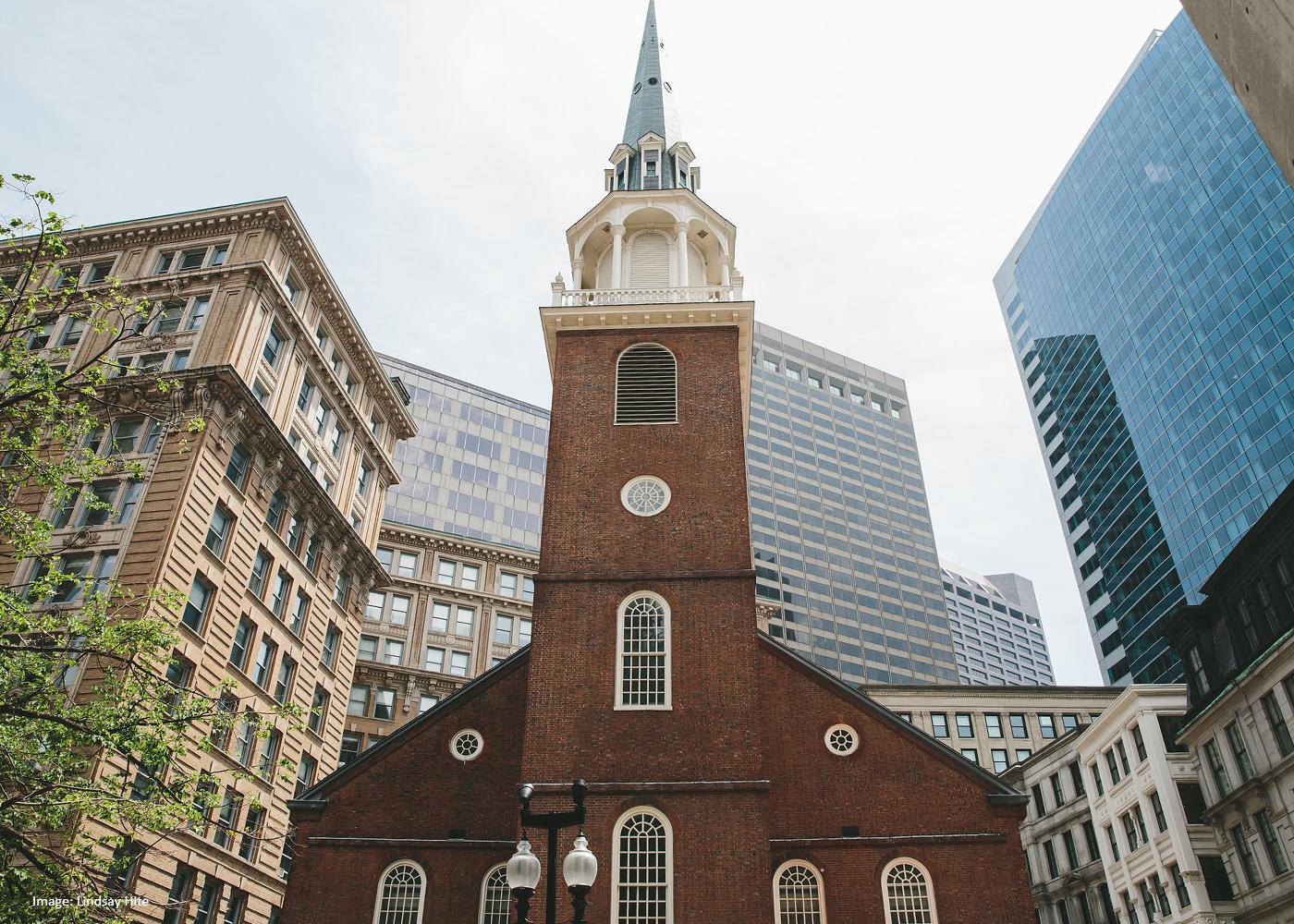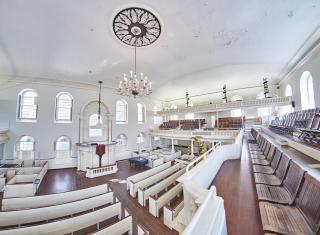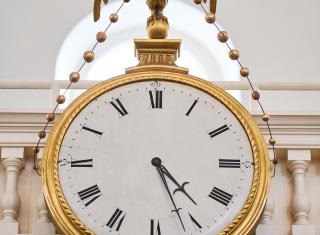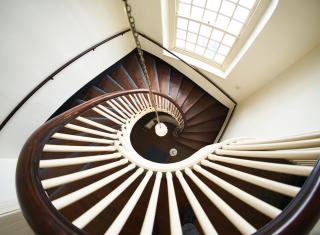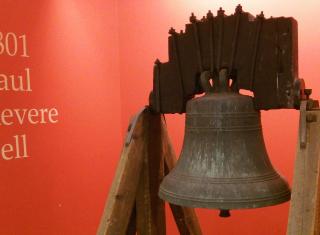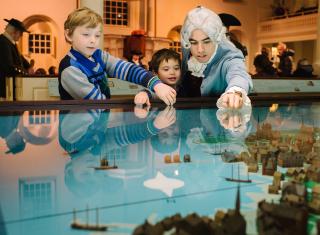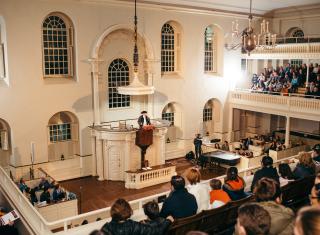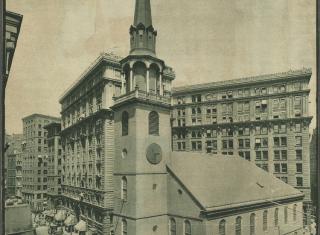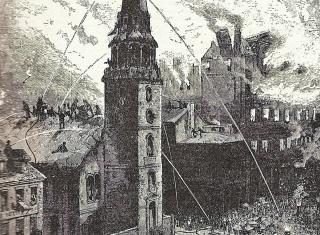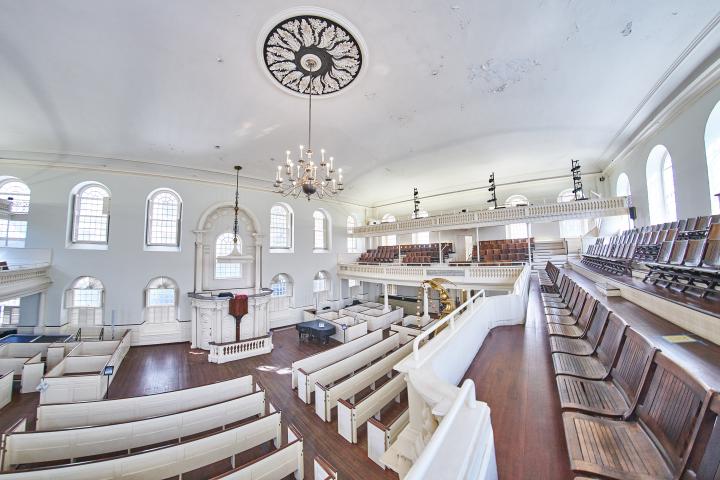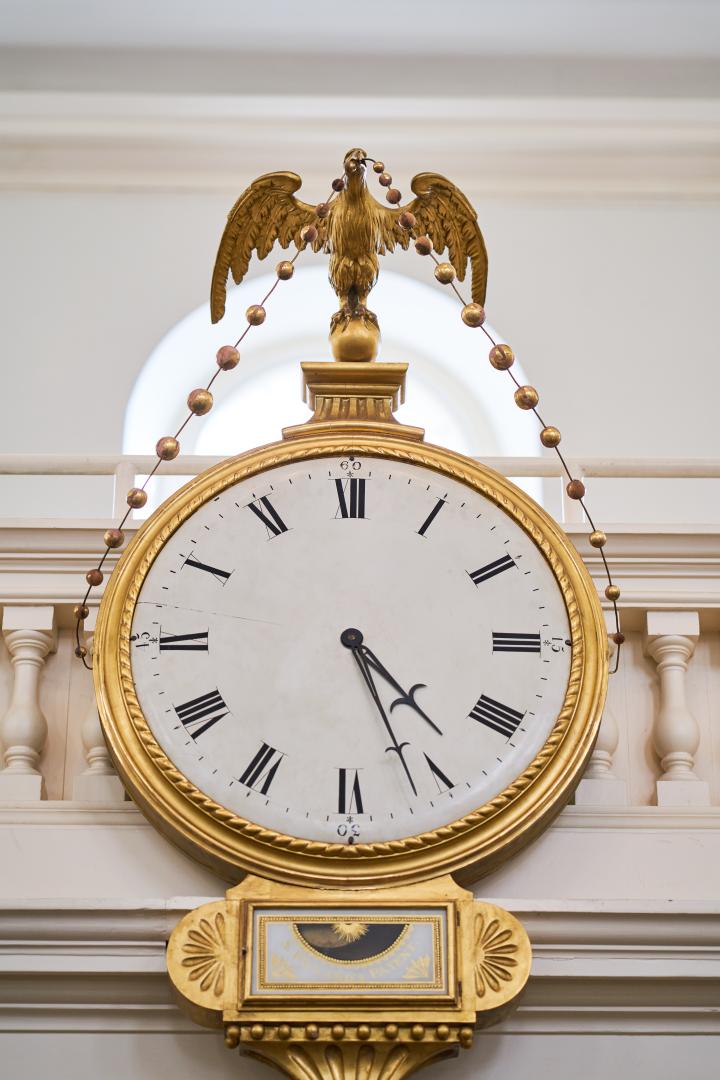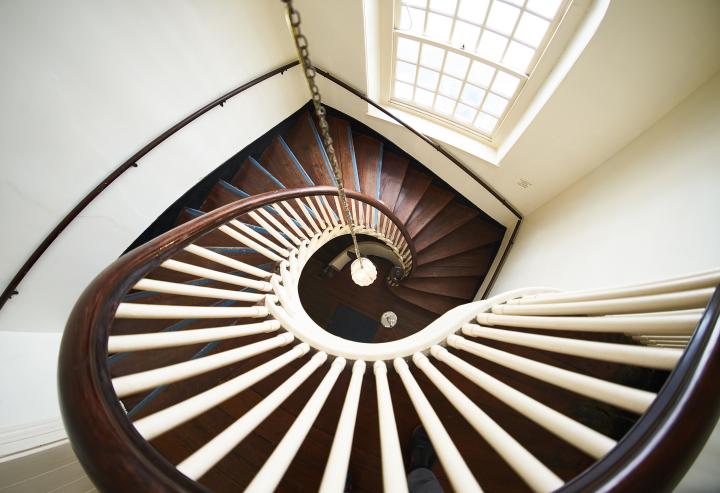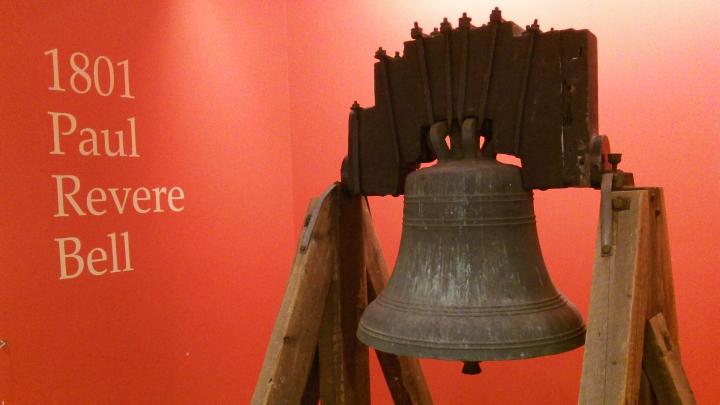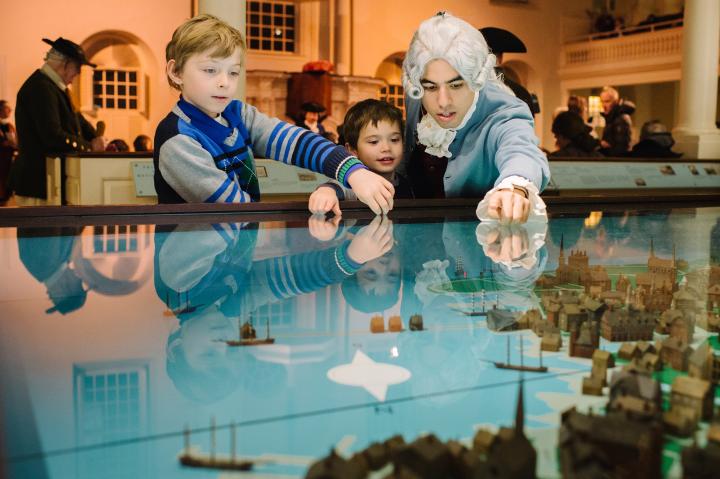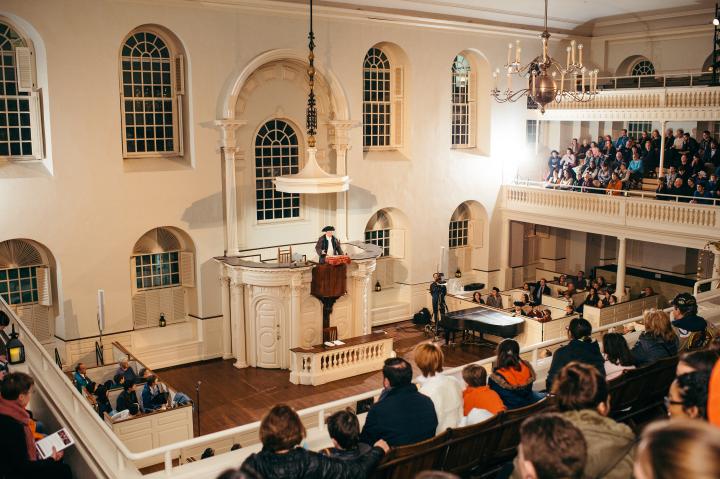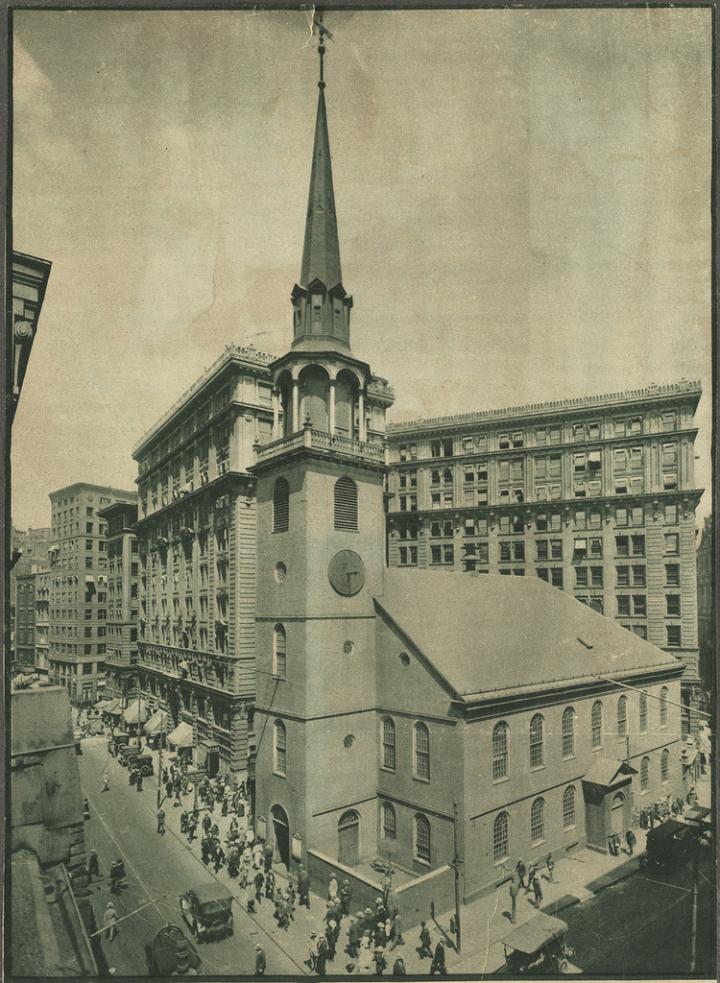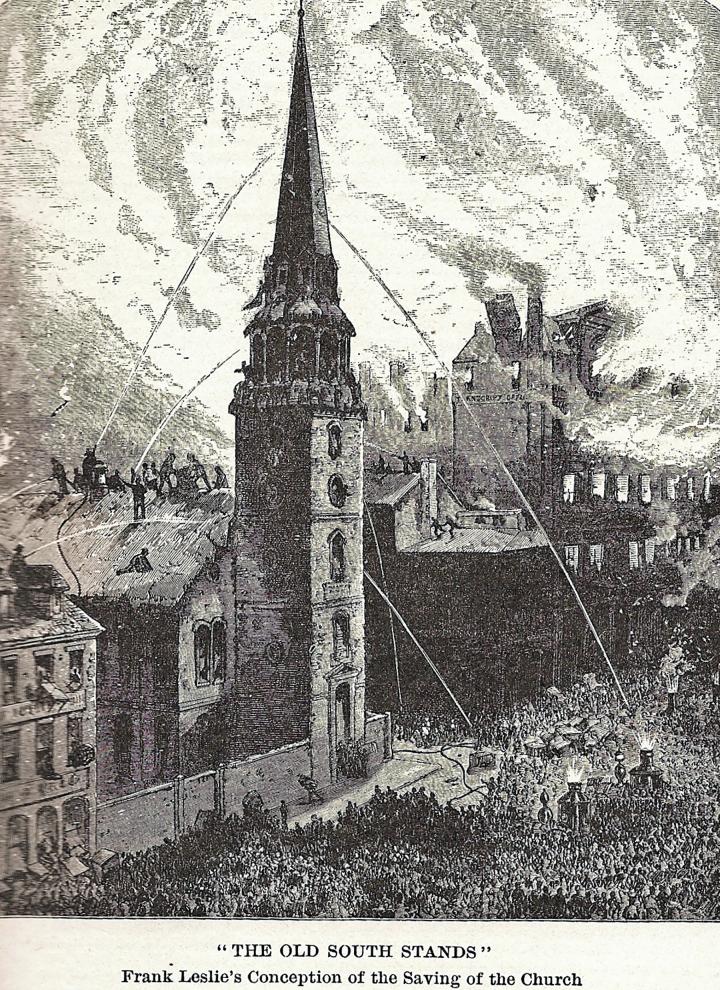Experience history where the Boston Tea Party began! This hall rang with words from Puritan sermons, public meetings, and the tea tax debates - visit Old South Meeting House and add your voice to history.

Visiting Old South Meeting House
310 Washington St.
Boston, MA 02108
Managed by Revolutionary Spaces
Old South Meeting House
Access Information
- Wheelchair Accessible
- Restrooms
- Large Print
- Assistive Listening Device
- Braille
Featured Photo of Tour Site
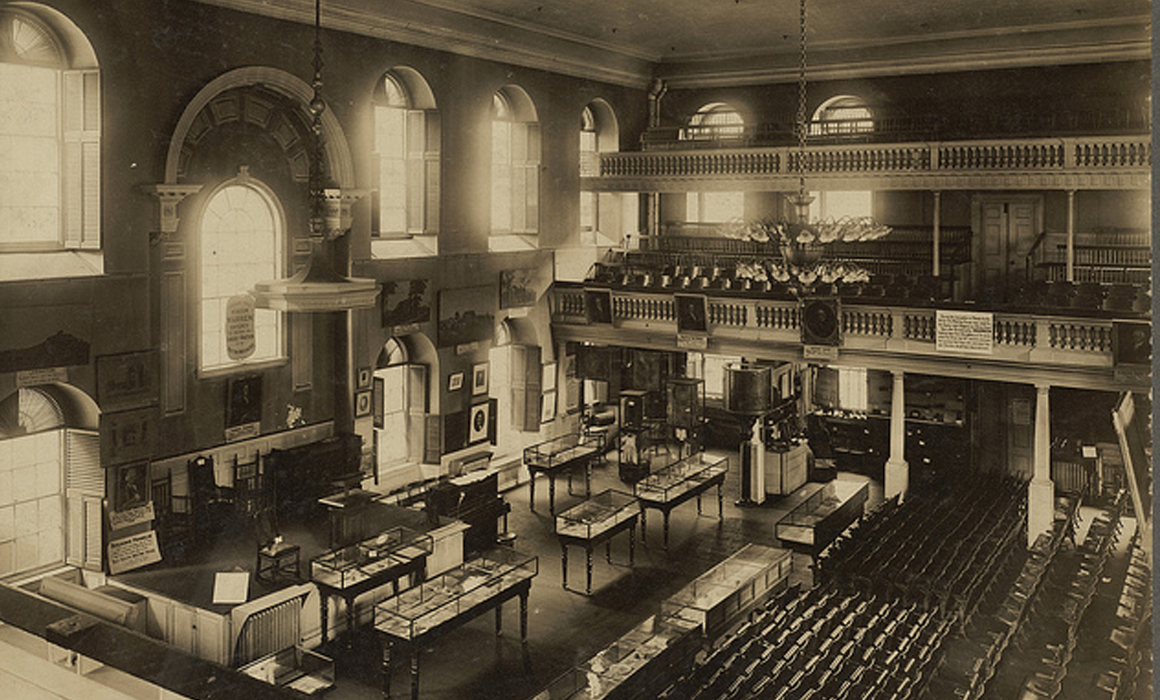
Saved from the wrecking ball in 1876 by “twenty women of Boston,” Old South Meeting House has been a public museum since 1877. Image depicts a very early museum configuration.
Old South Meeting House was the largest building in colonial Boston and the stage for some of the most dramatic events leading up to the American Revolution.
Built as a Puritan meeting house in 1729, Old South Meeting House stands today as one of the nation’s most important colonial sites, one of the country’s first public historic conservation efforts, and one of the earliest museums of American history.
During the colonial period, members of Old South’s congregation included African-American poet Phillis Wheatley who published a book in 1773 while she was enslaved; patriot leaders Samuel Adams and William Otis; William Dawes, who rode with Paul Revere to Lexington in 1775; and the young Benjamin Franklin and his family.
Old South became the center for massive public protest meetings against British actions in colonial Boston from 1768-75. Patriots and Loyalists alike met to argue and inform, to protest the impressment of sailors into the King’s navy, and to commemorate the bloody Boston Massacre of 1770. Yet it was the series of meetings that culminated on December 16, 1773 that sealed Old South’s fate as one of this country’s most significant buildings. On that day, over 5,000 men crowded into the meeting house to hotly debate the controversial tea tax. When the final attempt at compromise failed, Samuel Adams gave the signal that started the Boston Tea Party. The Sons of Liberty led the way to Griffin’s Wharf, where they dumped 342 chests of tea into the frigid harbor.
In 1872, Old South Meeting House was put on the auction block, sold for the value of its building materials, and slated for demolition. A determined group of “twenty women of Boston” organized to to save the building from the wrecker’s ball: they enlisted famous Bostonians, including Ralph Waldo Emerson, Julia Ward Howe, Henry Wadsworth Longfellow, and Louisa May Alcott to rally people to secure funds and spread the word. Their combined efforts raised an enormous sum to purchase the building and its land and save Old South. It was the first time that a public building in the United States was saved because of its association with nationally important historical events. Old South Meeting House has been open to the public as a museum and meeting place since 1877 thanks to the efforts of that original Old South Association.

“…in every human Breast, God has implanted a Principle, which we call love of Freedom; it is impatient of Oppression, and pants for Deliverance.”
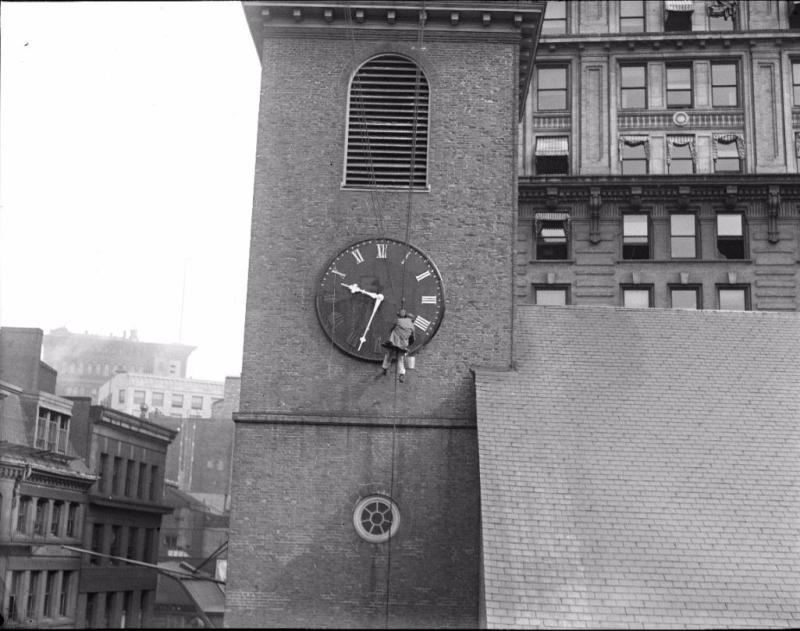
Clock Tower & Paul Revere Bell
The clock's 876-pound bronze bell was made at the Paul Revere & Sons Bell & Cannon Foundry in Boston in 1801. Originally created for the town of Westborough, Massachusetts, the bell rang out from a series of churches in the town until 2007. It was installed in the Old South Meeting House tower on October 16, 2011 in a grand ceremony.
